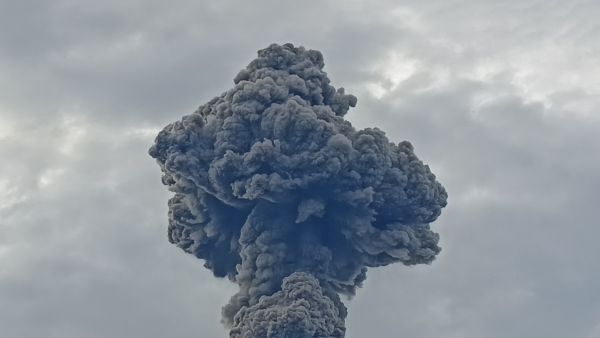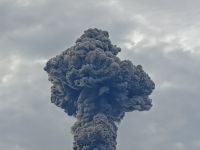ALBAWABA- The Hayli Gubbi volcano in Ethiopia’s Afar region erupted on November 23, 2025, for the first time in roughly 12,000 years, sending ash plumes up to 8.5 kilometers into the atmosphere, authorities said Sunday.
The eruption, which began at dawn, pushed fine volcanic particles eastward across the Red Sea, dusting parts of Yemen and Oman and prompting health advisories and flight adjustments.
Ethiopian officials, working with the U.N.’s Volcanic Ash Advisory Centre (VAAC), reported that the ash cloud, spanning several thousand square kilometers, had reached Yemen’s Sana’a, Hodeidah, and Taiz governorates, producing hazy conditions and minor respiratory warnings.
Light dustfall was also recorded in Oman’s Dhofar and Al Wusta regions, while traces were detected as far as northern India and Pakistan due to high-altitude jet streams.
The eruption continues with periodic lava and gas emissions, though no evacuations have been deemed necessary in the sparsely populated Afar Depression, a geologically active zone where three tectonic plates meet.
Aviation authorities across the Arabian Peninsula have rerouted multiple flights to avoid the ash, and meteorologists in Oman have advised residents to limit exposure to the fine silica particles.
Hayli Gubbi’s unexpected reactivation underscores the instability of the East African Rift, where volcanic and seismic activity is common. The widespread dispersion of ash, crossing the Bab el-Mandeb Strait into Asia, illustrates the far-reaching impacts of major eruptions, echoing global disruptions caused by past events such as Iceland’s Eyjafjallajökull eruption in 2010.











